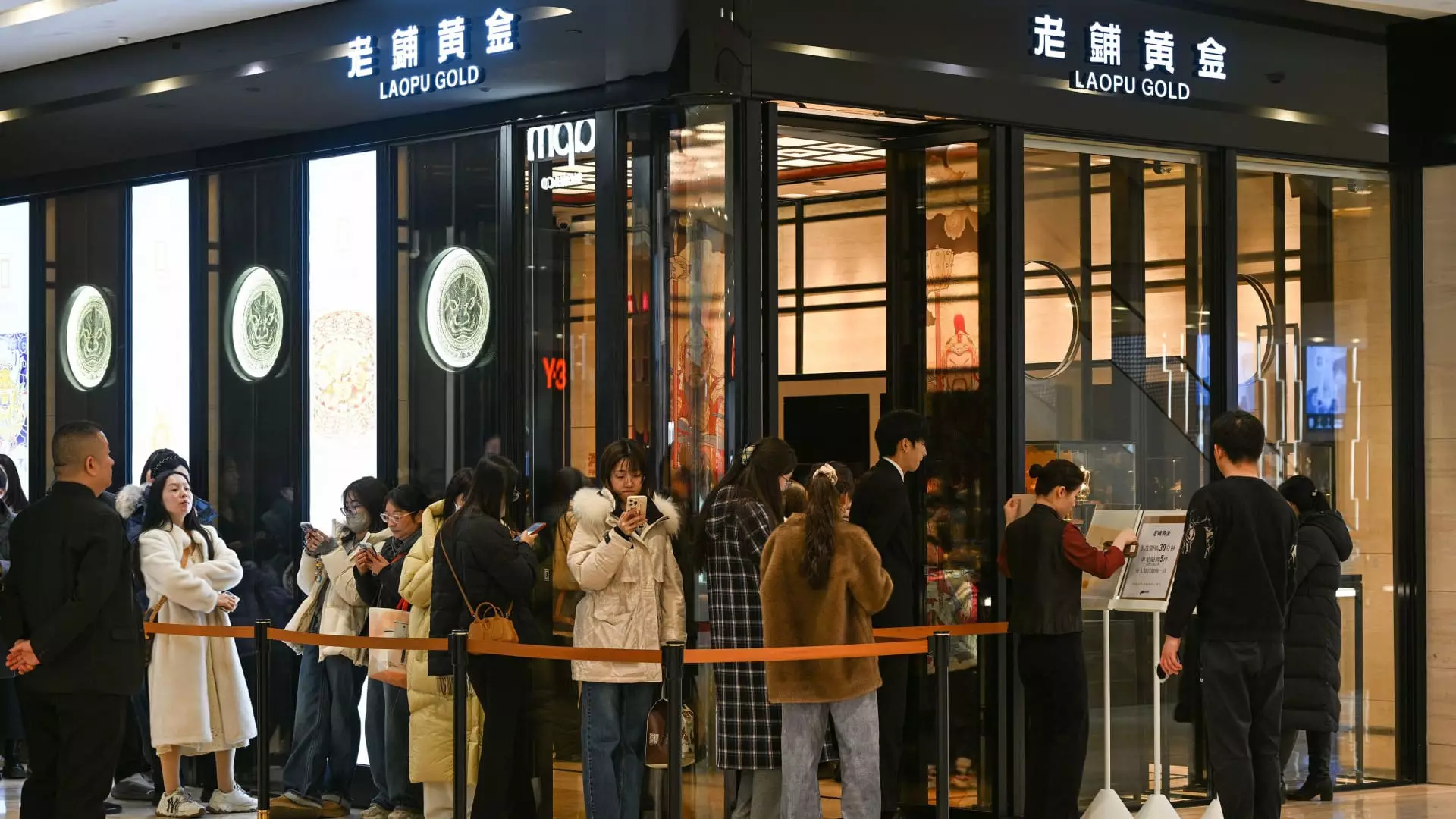Recent financial disclosures from major Chinese corporations hint at a promising resurgence in consumer spending, even if it isn’t quite back to the vibrancy of pre-pandemic days. Alibaba and JD.com have reported a notable uptick in their retail revenues during the fall months of 2024, suggesting that patience may finally be paying off for the beleaguered Chinese consumer. Charlie Chen, a seasoned voice at China Renaissance Securities, noted this recovery but also cautioned that it doesn’t represent a full-fledged return to earlier spending patterns. The recovery, he asserts, is teetering on the precipice of what could be healthy consumer confidence but may still be hampered by persistent economic pressures.
At the heart of this hesitant rebound is China’s real estate crisis—a significant factor that has left a dent in consumers’ perception of their financial well-being. Policymakers have signaled their commitment to reviving consumption, evidenced by new subsidy programs aimed at enticing consumers to spend on electronics and home appliances. However, while such measures may create a short-term bounce, they won’t erase the underlying concerns affecting consumer sentiment. What is clear, though, is a landscape of cautious optimism making its way through the haze of uncertainty.
Disparate Wins in a Soft Market
In spite of the broader economic malaise, certain sectors are emerging as unexpected winners within the consumer landscape. Companies like Laopu Gold and Pop Mart have reported staggering growth—236% profit increases and double revenue in mainland China, respectively—highlighting a trend where niche markets can thrive even amid adversity. Such instances illuminate the fragmented nature of the recovery, displaying that not all facets of the consumer economy are suffering.
JD.com, boasting a robust increase in sales for electronics, reported a 15.8% rise in Q4 year-on-year. Yet even JD’s growth is stunted compared to the bicycle wheels of momentum it was pedaling in 2021, when sales soared by nearly 23%. Sandy Xu of JD.com has admitted to ongoing macro challenges, yet she holds onto an optimistic long-term vision for improved consumer sentiment—a sentiment grounded in the reality that the road to recovery is often filled with potholes.
Stresses in the Fintech Realm
Meanwhile, Tencent’s recent performance paints a more nuanced picture of the economy. Their fintech sector experienced only modest growth; a stark contrast to the roaring success stories of years past. A mere 3% in revenue growth is disappointing when juxtaposed against the booming commercial payment landscape of 2019. This stagnation may reflect a plateau in consumer transaction behavior as economic uncertainties loom large, pulling consumers back to the safety of their wallets.
As e-commerce and fintech companies strive to maintain their footing, the competition is becoming fierce. Retailers are competing fiercely against price cuts initiated by electric vehicle manufacturers and the lure of online discounts, aptly demonstrating that the consumer landscape is a battleground in an increasingly competitive market. As companies grapple with lower same-store sales and diminishing growth rates, the financial vision for consumer spending appears precarious at best.
The Evolving Tides of Consumer Preferences
As we dissect the narrative of consumer spending, it becomes apparent that evolving consumer preferences have a significant role in shaping the recovery dynamics. Despite the sluggish growth in traditional retail sectors, we observe burgeoning interest in innovative products, such as premium e-scooters and international travel experiences. Niu Technologies reported an 80% surge in e-scooter sales, just as Trip.com highlighted the resilience of the travel segment, with international trips bouncing back to levels exceeding the pre-pandemic era.
With dynamic demographics like the “silver generation” emerging as a lucrative target for travel providers, it is evident that the consumer spending landscape is shifting dramatically. However, as exciting as these trends may seem, the hard truth remains: they are not representative of an overall robust recovery. The average growth of 4% in retail sales reported recently is a far cry from the double-digit figures that would indicate a real turnaround.
The Path Ahead: Treading Water in a New Economic Paradigm
The outlook for Chinese consumer spending remains a complicated tapestry of opportunities and challenges. While there are sparks of revival in certain sectors, the broader economic climate seems to suggest a protracted road ahead. Initiatives aimed at stimulating spending are welcome, but whether they will sufficiently reinvigorate the overarching consumer sentiment remains unclear.
In this context, it is essential to acknowledge the power dynamic at play. The Chinese government’s focus on consumption-stimulating policies could yet provide the necessary push for recovery. However, any expectations for a swift rebound need recalibration. Given the reality of multifaceted economic pressures, a more tempered approach to expectations for recovery is warranted. As the dust settles, understanding consumer behavior will be pivotal in navigating the new normal that awaits.

